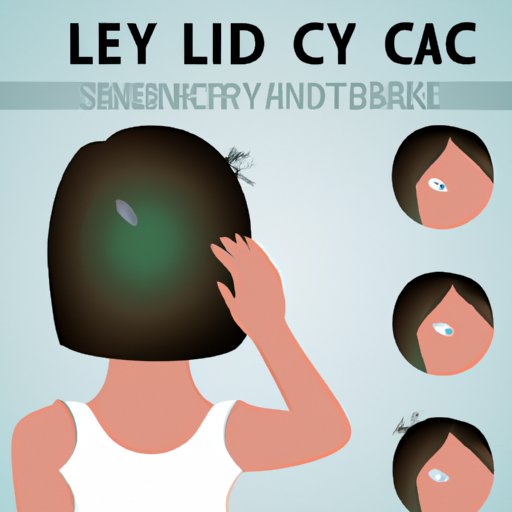
I. Introduction
Dealing with a lice infestation can be frustrating and uncomfortable. Early detection is crucial, as untreated lice can worsen and spread quickly. In this article, we will discuss the symptoms to look out for, the importance of early detection, DIY detection tips, identifying lice versus other bugs, next steps after spotting lice, and tips for preventing future outbreaks.
II. Symptoms to Look Out For
The most common symptoms of lice infestations include intense scalp itching, red rashes, and small white nits (eggs) attached to the hair shaft. Itching is the number one symptom and is caused by a reaction to the saliva left behind by lice. Rashes are usually caused by scratching the scalp and can lead to infection if not treated. Nits are typically found in the hair near the roots and can be the size of a pinhead.
In some instances, itching or rashes may not occur, and nits may be the only sign of an infestation. Lice can also travel to other parts of the body, such as the eyebrows or eyelashes, causing redness, itching, and irritation.
III. The Importance of Early Detection
Recognizing symptoms early on is crucial to preventing and treating lice infestations. Untreated lice can worsen and spread to others through direct head-to-head contact, sharing combs or brushes, or headgear such as hats, helmets, or scarves. Infestations can also cause psychological distress and embarrassment, particularly in young children.
If left untreated, lice can lead to secondary infections caused by scratching the scalp or other affected areas. These infections may require antibiotics or other medications, and in severe cases, hospitalization.
IV. DIY Detection Tips
There are several quick and easy methods you can use to detect lice. The most effective tool is a lice detection comb, which can be purchased at most drug stores. To use, apply conditioner to wet hair and comb through small sections, starting at the scalp and moving toward the ends of the hair. Wipe the comb onto a tissue or paper towel after each pass to check for lice or nits.
Bright lighting can also be helpful in detecting lice. Shine a bright light onto the scalp and look for any movement or the presence of nits. A magnifying glass can also be useful in examining the hair and scalp closely.
When using these methods, it is important to use proper lighting and combing techniques to ensure accurate detection. Be sure to comb through all areas of the head, including behind the ears and at the nape of the neck.
V. Identifying Lice Versus Other Pesky Bugs
It can be difficult to distinguish lice from other bugs, such as dandruff or bed bugs. However, there are several key differences to look for. Unlike dandruff, nits are securely attached to the hair shaft and cannot be easily removed with a simple shake of the head. Lice also move quickly and can be seen crawling along the scalp or hair.
Bed bugs, on the other hand, typically do not infest the scalp or hair and are more commonly found in bedding or furniture. Additionally, bed bug bites tend to be larger and redder than lice bites and are usually arranged in a line or cluster.
VI. Next Steps After Spotting Lice
If you suspect you or a loved one has lice, it is important to seek medical advice before starting any treatment. Over-the-counter lice treatments can be effective, but they can also be harsh on the scalp and may not work in severe infestations. A healthcare professional can recommend the best treatment options based on the severity of the infestation and individual circumstances.
Aside from treatment, there are several steps you can take to prevent future outbreaks and spreading of lice. Avoid sharing personal items such as combs, brushes, hats, and helmets. Wash bedding and clothing in hot water and dry on high heat. Vacuum carpets, furniture, and car seats regularly. It may also be necessary to inform close contacts such as family members, classmates, or coworkers of the infestation to prevent further spread.
VII. Conclusion
Early detection and prompt treatment are key to managing lice infestations. Knowing what to look for and using effective detection methods can prevent the spread of lice and reduce the risk of secondary infections. Remember to seek medical advice before starting any treatment and take necessary steps to prevent future outbreaks and spreading of lice.





